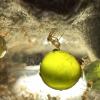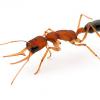- Formiculture.com
- Forums
- Gallery
- Members
- Member Map
- Chat

Ant id please and thank you
Started By
Vern530
, Jan 15 2020 3:18 PM
33 replies to this topic
#21
 Offline
-
Posted January 15 2020 - 4:32 PM
Offline
-
Posted January 15 2020 - 4:32 PM
Myrmica.
Spoiler
#22
 Offline
-
Posted January 15 2020 - 4:33 PM
Offline
-
Posted January 15 2020 - 4:33 PM
Unlikely, only pheidole in Ca with workers this big are in the desert.
#23
 Offline
-
Posted January 15 2020 - 4:34 PM
Offline
-
Posted January 15 2020 - 4:34 PM
Maybe pheidole?
Looks too big for pheidole... definitely myrmecine though
#24
 Offline
-
Posted January 15 2020 - 5:09 PM
Offline
-
Posted January 15 2020 - 5:09 PM
I think we can say it's myrmica.
#25
 Offline
-
Posted January 15 2020 - 5:15 PM
Offline
-
Posted January 15 2020 - 5:15 PM
Until he shows us a picture of the queens we can't be 100% sure.
My journals:
Polyergus Mexicanus: https://www.formicul...gs/#entry175528
Lasius minutus: https://www.formicul...cs/#entry174811
Lasius latipes: https://www.formicul...gs/#entry206449
General acanthomyops journal: https://www.formicul...yops-with-eggs/
Polyergus Mexicanus: https://www.formicul...gs/#entry175528
Lasius minutus: https://www.formicul...cs/#entry174811
Lasius latipes: https://www.formicul...gs/#entry206449
General acanthomyops journal: https://www.formicul...yops-with-eggs/
#26
 Offline
-
Posted January 15 2020 - 5:16 PM
Offline
-
Posted January 15 2020 - 5:16 PM
I disagree. I think it is Veromessor andrei. Very common species around the bay area.
Hi there! I went on a 6 month or so hiatus, in part due, and in part cause of the death of my colonies.
However, I went back to the Sierras, and restarted my collection, which is now as follows:
Aphaenogaster uinta, Camponotus vicinus, Camponotus modoc, Formica cf. aserva, Formica cf. micropthalma, Formica cf. manni, Formica subpolita, Formica cf. subaenescens, Lasius americanus, Manica invidia, Pogonomyrmex salinus, Pogonomyrmex sp. 1, Solenopsis validiuscula, & Solenopsis sp. 3 (new Sierra variant).
#27
 Offline
-
Posted January 15 2020 - 5:38 PM
Offline
-
Posted January 15 2020 - 5:38 PM
are they polygenous?colony had two queens for sure and was well past founding
I think some are, but not all. I guess it depends on the species. Any pictures of the queens?
Most North American species of Myrmica are polygynous. Just don't combine separate species. It is actually impossible to distinguish some species, as they're identical. A dissection and/or genetic analysis would be necessary to tell them apart. So the only way you would be able to tell is if they fought. Then you would immediately separate them (assuming you even have two queens, and that you even want to risk your queen's lives).
"God made..... all the creatures that move along the ground according to their kinds (including ants). And God saw that it was good. Genesis 1:25 NIV version
Keeping:
Formica cf. pallidefulva, cf. incerta, cf. argentea
Formica cf. aserva, cf. subintegra
Myrmica sp.
Lasius neoniger, brevicornis
#28
 Offline
-
Posted January 15 2020 - 5:41 PM
Offline
-
Posted January 15 2020 - 5:41 PM
I added a photo of the queen(sorry best I could do) .a friend of mine said aphaenogaster occidentalis and after looking ant ant web I believe he’s right but still open to suggestion
Definitely not vermessor andrei o have a personal colony of them and their much bigger
Definitely not vermessor andrei o have a personal colony of them and their much bigger
#29
 Offline
-
Posted January 15 2020 - 5:42 PM
Offline
-
Posted January 15 2020 - 5:42 PM
I saw a photo of a polygynous colony of them, but that doesn't mean everything.
"God made..... all the creatures that move along the ground according to their kinds (including ants). And God saw that it was good. Genesis 1:25 NIV version
Keeping:
Formica cf. pallidefulva, cf. incerta, cf. argentea
Formica cf. aserva, cf. subintegra
Myrmica sp.
Lasius neoniger, brevicornis
#30
 Offline
-
Posted January 15 2020 - 5:55 PM
Offline
-
Posted January 15 2020 - 5:55 PM
Ok not sure what you mean?
I was saying my vermessor andrei and three times the size of these ants is all
I was saying my vermessor andrei and three times the size of these ants is all
#31
 Offline
-
Posted January 15 2020 - 6:41 PM
Offline
-
Posted January 15 2020 - 6:41 PM
Aphaenogaster occidentalis seems very likely now that you have queen photos
My journals:
Polyergus Mexicanus: https://www.formicul...gs/#entry175528
Lasius minutus: https://www.formicul...cs/#entry174811
Lasius latipes: https://www.formicul...gs/#entry206449
General acanthomyops journal: https://www.formicul...yops-with-eggs/
Polyergus Mexicanus: https://www.formicul...gs/#entry175528
Lasius minutus: https://www.formicul...cs/#entry174811
Lasius latipes: https://www.formicul...gs/#entry206449
General acanthomyops journal: https://www.formicul...yops-with-eggs/
#32
 Offline
-
Posted January 15 2020 - 7:27 PM
Offline
-
Posted January 15 2020 - 7:27 PM
Not every day you get a two queen colony, however, I've noticed that polgony seems a bit common for this species seing that I have a polygynous colony too.
Edited by EthanNgo678, January 15 2020 - 7:27 PM.
Plants r cool
#33
 Offline
-
Posted January 15 2020 - 8:01 PM
Offline
-
Posted January 15 2020 - 8:01 PM
Ya pure stroke of luck.was bored at work and first stone I flip over.and I’ve never seen them at work before .I'm stoke had a gypsum all in one formicarium I bought off eBay and never used so I’m gonna try this guys out in it
- Martialis likes this
#34
 Offline
-
Posted January 16 2020 - 3:14 PM
Offline
-
Posted January 16 2020 - 3:14 PM
Queens are definitely some sort of Aphaenogaster.
0 user(s) are reading this topic
0 members, 0 guests, 0 anonymous users





















